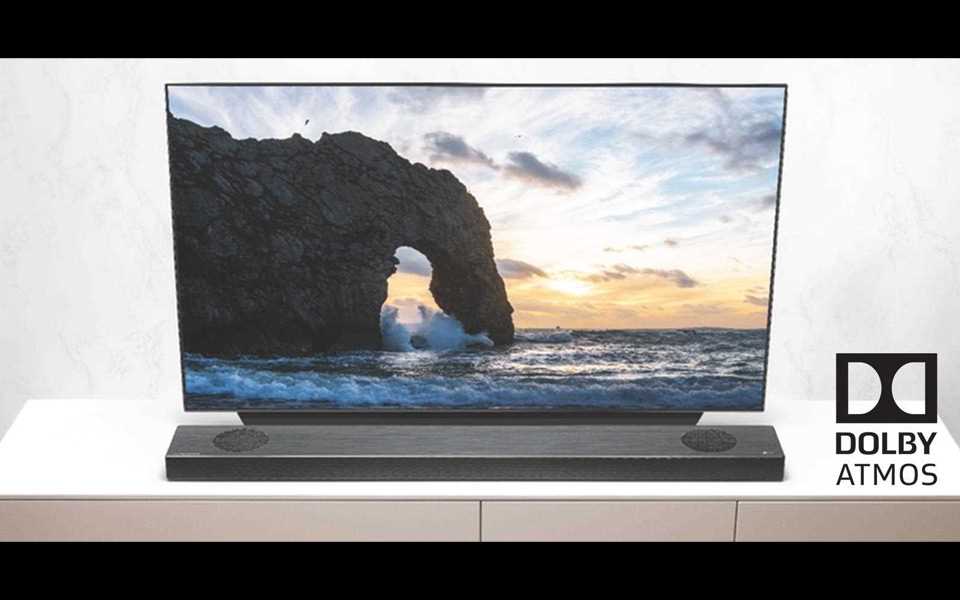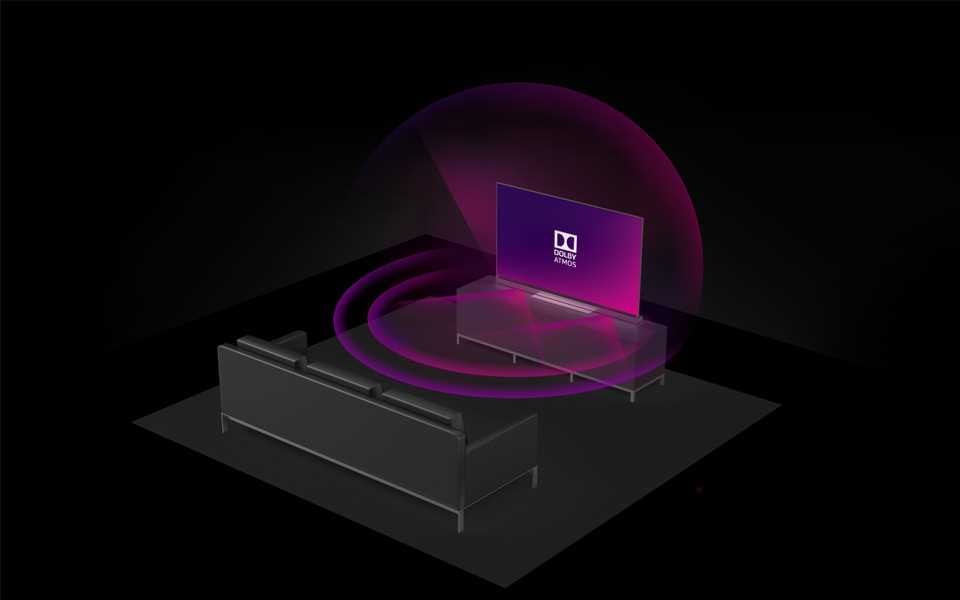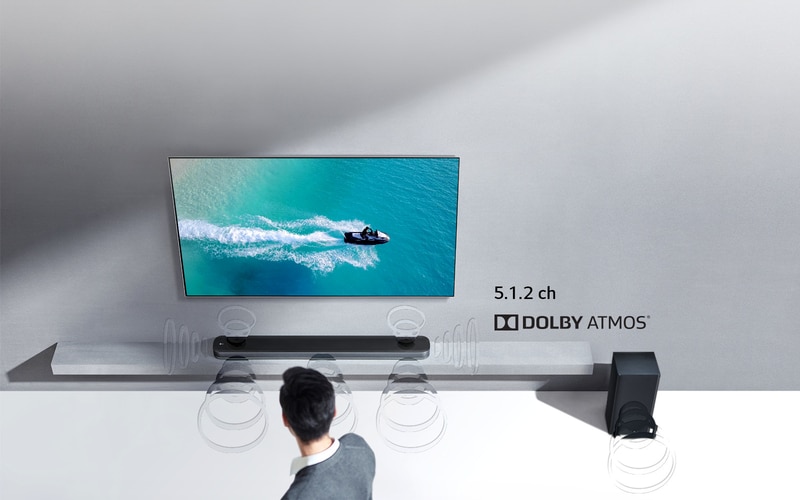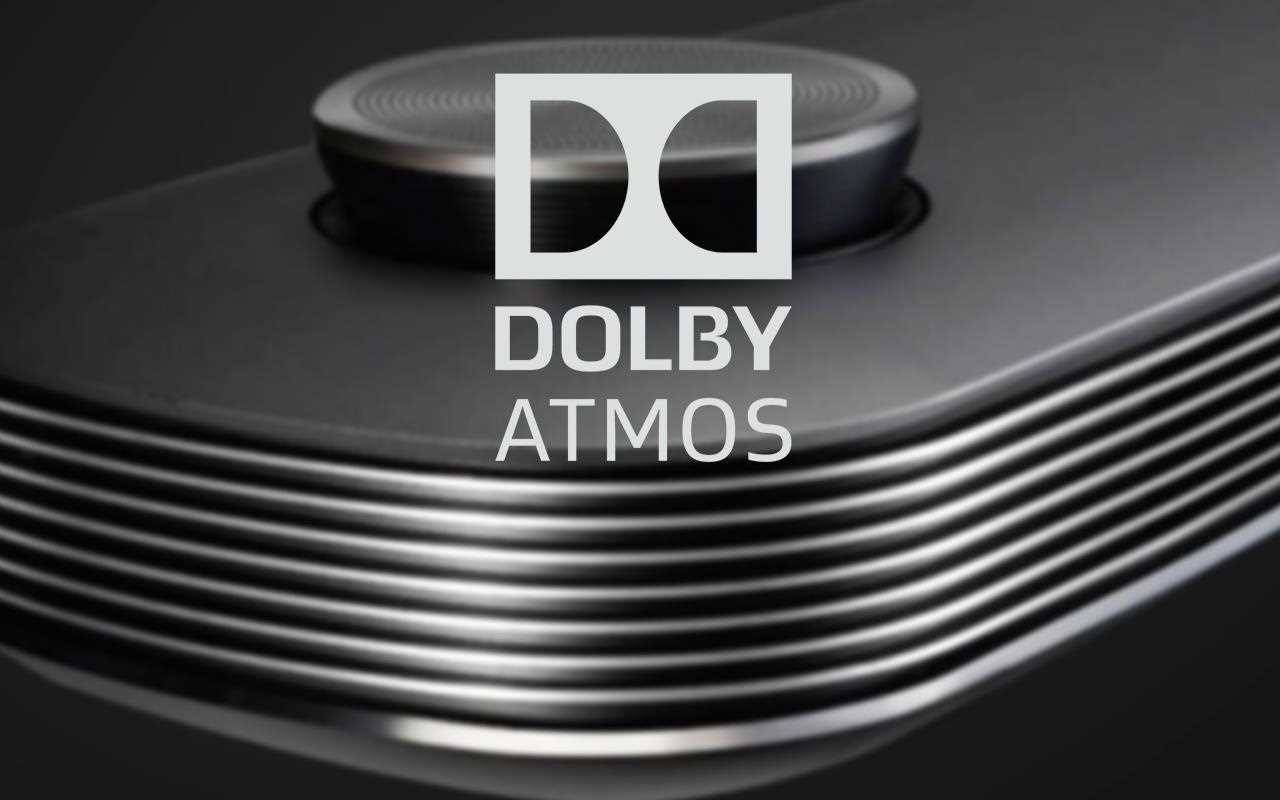We use cookies, including cookies from third parties, to enhance your user experience and the effectiveness of our marketing activities. These cookies are performance, analytics and advertising cookies, please see our Privacy and Cookie policy for further information. If you agree to all of our cookies select “Accept all” or select “Cookie Settings” to see which cookies we use and choose which ones you would like to accept.
What is Dolby Atmos? Soundbars and TVs explained

Dolby Atmos has revolutionised the cinema experience and now it’s bringing incredible movie-quality sound to your home with the latest TVs and soundbars.
To find out more about the technology and how it can it help revolutionise your at-home entertainment system, read on below.
What is Dolby Atmos?
Dolby Atmos is a new type of surround sound from the famous audio pioneers. Sound is freed from traditional channels to create audio that flows around you in three-dimensional space.
You will find Dolby Atmos technology in cinemas and Hollywood content, as well as in the home on TVs, to enjoy a variety of content from the likes of Amazon Prime Video, Netflix, Sky and Apple TV. Our guide explains everything you need to know about Dolby Atmos sound.

How is Dolby Atmos different?
Traditional surround sound works by separating audio into channels and delivering specific sounds to each speaker. In cinemas it has been delivered in this way for many years.
Stereo sound originally delivered audio through just two channels, before surround sound increased this to five channels placed around the room. Dolby saw the future of surround sound outside of channel audio.
“Dolby Atmos was developed to take the best advantage of whatever equipment you have available,” says Rob France, Head of Home Content Engineering at Dolby. “A Dolby Atmos TV will sound substantially better than a regular stereo TV – it will give you a much more immersive sound effect coming from just those two speakers.”
Read more from Rob France in our interview on Dolby Atmos.
Problems with traditional surround sound
- Sound is confined to the number of channels in your speaker system
- Sound can be delivered in only a small number of places in your room
- Sound quality varies as different speakers are prioritised in the sound mix
What does Dolby Atmos do?
Dolby Atmos frees sound from the restrictive channels we’ve talked about already. Separated from this, the sound can move freely in space – like bubbles floating in the air. There are two main benefits of Dolby Atmos sound:
- Sound from above with overhead speakers
- Object-based audio with precision control
Dolby Atmos in the cinema – sound from above
One of the main benefits of Dolby Atmos is the ability to place sound anywhere in the room – even overhead. State-of-the art cinemas are equipped with ceiling speakers that authentically recreate the sound of…
- Helicopter blades whirring
- Crashes of thunder
- Screeching car tyres
The overhead sound doesn’t simply occur in one place. It moves as it would in real life – think of a fighter jet blazing across the sky or the way thunder travels and echoes.
“One of my favourites is Gravity – one of the first movies mixed natively in Dolby Atmos,” Rob adds. “The way you hear Sandra Bullock coming from various parts of the space scene they’re trying to set, I think it brings across the real capabilities of the Dolby Atmos system in a great way.”
Directors and filmmakers have unprecedented control over the sound in their movies and TV shows with Dolby Atmos.
Individual speakers fitted around the cinema – in the walls and ceiling – can be isolated with precision sounds sent to them. Directors can create audio that’s more detailed and nuanced in a few ways:
- Placing individual sounds exactly where they want them
- Volume of individual sounds can be controlled with precision
- Sound can be made big, like an explosion, or small, like a pin drop
“Dolby Atmos gives content creators much more flexibility,” says Rob. “If they’re wanting to deliver that calm and quiet scene, with just subtle bits and moments, they can do that. But if they want to bring big explosions across, that works too.”
Learn more about Dolby Atmos in the cinema
Dolby Atmos at home
Dolby has a long tradition of bringing its most innovative technology to your TV. This trend continues with Dolby Atmos home theatre.

OLED and NanoCell TVs are engineered to play content mastered in Dolby Atmos. The audio giant uses its deep understanding of human audio perception to recreate the experience of overhead speakers and precision audio at home.
So, how do LG Dolby Atmos TVs work
- TV encodes the audio signal in Dolby Atmos recorded content
- Creates a virtualised surround sound using your TV’s speakers
- Sound feels like it’s coming from the sides and centre of your TV
Some TVs have built-in front-firing speakers to project Atmos sound out into the room.
“A Dolby Atmos TV will sound substantially better than a regular stereo TV,” says Rob. “But by adding a soundbar to a Dolby Atmos TV, it takes it to another level.”
Dolby Atmos soundbars – the ultimate experience
How does a Dolby Atmos soundbar work?
Atmos soundbars are optimised to get the best from Dolby Atmos content – recreating cinematic sound that flows all around you.
“One of the key things that’s different about Dolby Atmos, is its ability to bring 3D sound,” Rob says. “The key elements of that are to give us much more height and the effect of (sound) coming from overhead.”
Atmos soundbars vary in power and size. Premium models have more speakers inside and boast extra power. There are two main categories of Dolby Atmos soundbars, but these more powerful ones deliver the best sound.
They do this by adding two upward-firing speakers, which bounce sound off your ceiling and back into the room. This creates the full experience of lifelike sound overhead and around you.
“The best way to experience Dolby Atmos in the home is to find one that fits with your lifestyle and environment,” explains Rob.
“Certain soundbars use the ability to reflect sound off the ceiling, with additional speakers that point sound up to the ceiling.
“That gives a compelling experience of those overhead sounds that the content creators have decided to position overhead, like the helicopter flying above in an action movie.”
Not all Atmos soundbars include two additional speakers. The slightly less powerful models still benefit from precision sound placement to deliver the effect of sound above and around you though.
Get started with Dolby Atmos today and explore our range of LG Dolby Atmos soundbars and Dolby Atmos TVs.


